Explore Okinawa: Irresistible Bucket List
for Beaches, Culture, and Adventure
Why Okinawa Is More Than Just Another Beach Destination
When people think of Japan, Tokyo’s neon lights or Kyoto’s ancient temples usually come to mind. But Okinawa? It’s Japan’s best-kept secret—a tropical paradise with white-sand beaches, crystal-clear waters, and a culture all its own. I’ve been obsessed with Japan for as long as I can remember—everything about the culture fascinates me, from the food and lifestyle to the best stationery you can buy. So it’s a no-brainer I’d want to explore Okinawa. Beyond Okinawa’s stunning landscapes, the islands offer a unique blend of traditional Ryukyu culture, vibrant festivals, and warm hospitality. Imagine snorkeling alongside vibrant coral reefs, hiking lush forests, and savoring some of the world’s healthiest cuisine. Whether you’re a beach lover, history buff, or adventure seeker, Okinawa has something for everyone. Here’s why it deserves a top spot on your bucket list—and how to explore Okinawa like a pro.
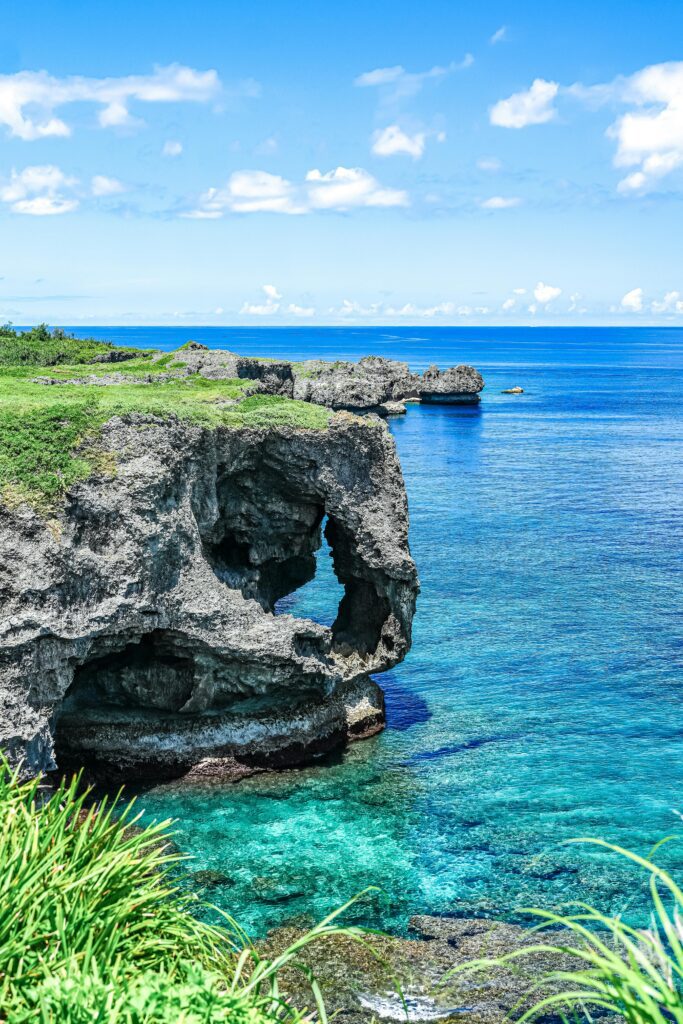
Top Reasons to Explore Okinawa
Stunning Beaches: Okinawa’s beaches are more than just pretty—they’re a slice of paradise with soft, white sands and crystal-clear waters. Whether you’re swimming in the calm turquoise bays of Ishigaki, lounging on Naminoue Beach, or exploring Miyako Island’s hidden coves, each beach has its own unique vibe. Snorkel or dive right off the shore, and you might encounter sea turtles or vibrant coral reefs.
Rich Culture and History: Unlike mainland Japan, Okinawa’s culture blends influences from China, Southeast Asia, and its indigenous Ryukyu Kingdom roots. Explore Shurijo Castle, visit traditional villages with local artisans, and experience vibrant festivals featuring traditional music and dance.
World-Class Diving and Snorkeling: With warm waters and thriving marine life, Okinawa is perfect for underwater explorers. Dive among vibrant coral reefs, swim with tropical fish, and spot majestic manta rays. Iconic spots like the Blue Cave and Yonaguni’s underwater ruins offer unique diving experiences.
Outdoor Adventures: Beyond beaches, Okinawa’s landscapes offer hiking trails through Yanbaru Forest, kayaking through mangrove tunnels, and cycling along scenic coastal roads. Nature lovers will find no shortage of breathtaking vistas and heart-pumping activities.
Healthy and Delicious Cuisine: Okinawan food is known for its role in local longevity. Taste signature dishes like Okinawan soba, goya champuru, and fresh seafood. Don’t miss beni-imo (purple sweet potato) and Blue Seal ice cream.
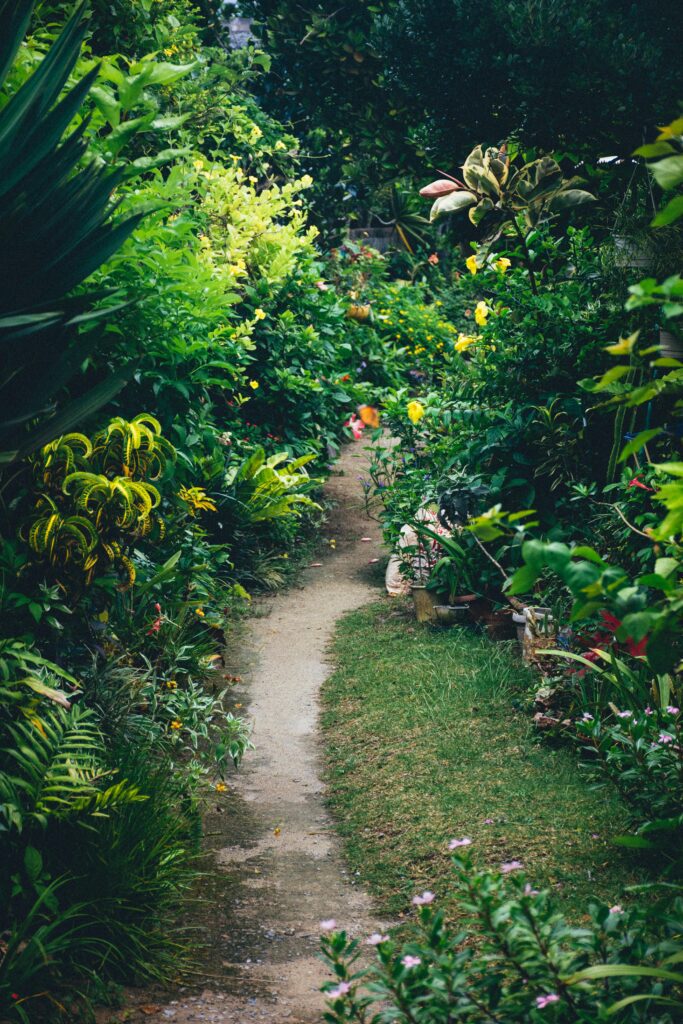
Best Time to Explore Okinawa
Spring (March to May): Mild temperatures and cherry blossoms make spring a beautiful time to visit. Pro tip: Visit in late March to catch the cherry blossoms before the mainland bloom, as Okinawa’s season starts earlier.
Summer (June to August): Perfect for beachgoers, but expect higher humidity and occasional typhoons. Pro tip: July offers some of the clearest waters for snorkeling and diving. Keep an eye on local weather forecasts to avoid typhoon disruptions.
Fall (September to November): Warm weather with fewer crowds—ideal for outdoor activities. Pro tip: Late September and October are prime times for spotting sea turtles while snorkeling.
Winter (December to February): Mild weather compared to mainland Japan, great for exploring nature and culture. Pro tip: Winter is the best time for whale watching, as humpback whales migrate to Okinawa’s warm waters during this season. Plus, you’ll find lower hotel rates and quieter beaches.
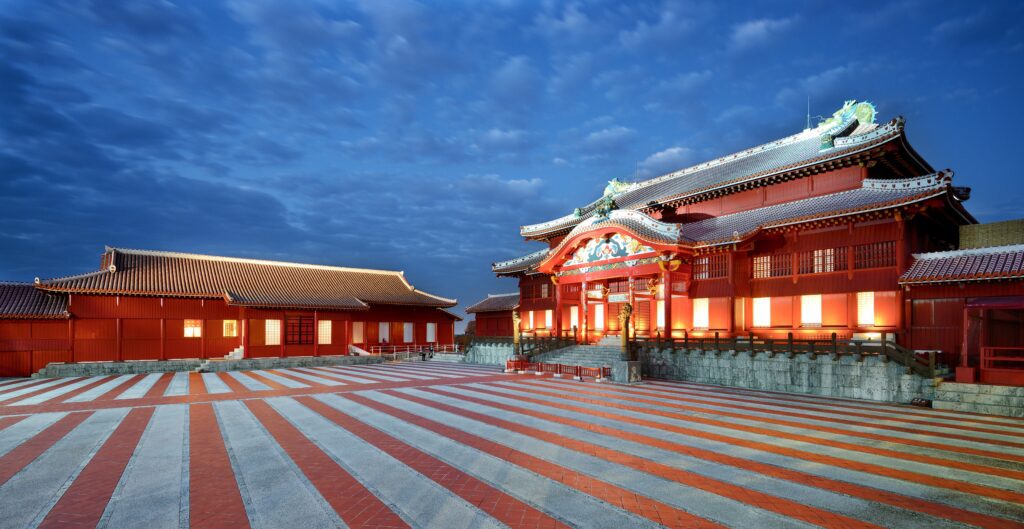
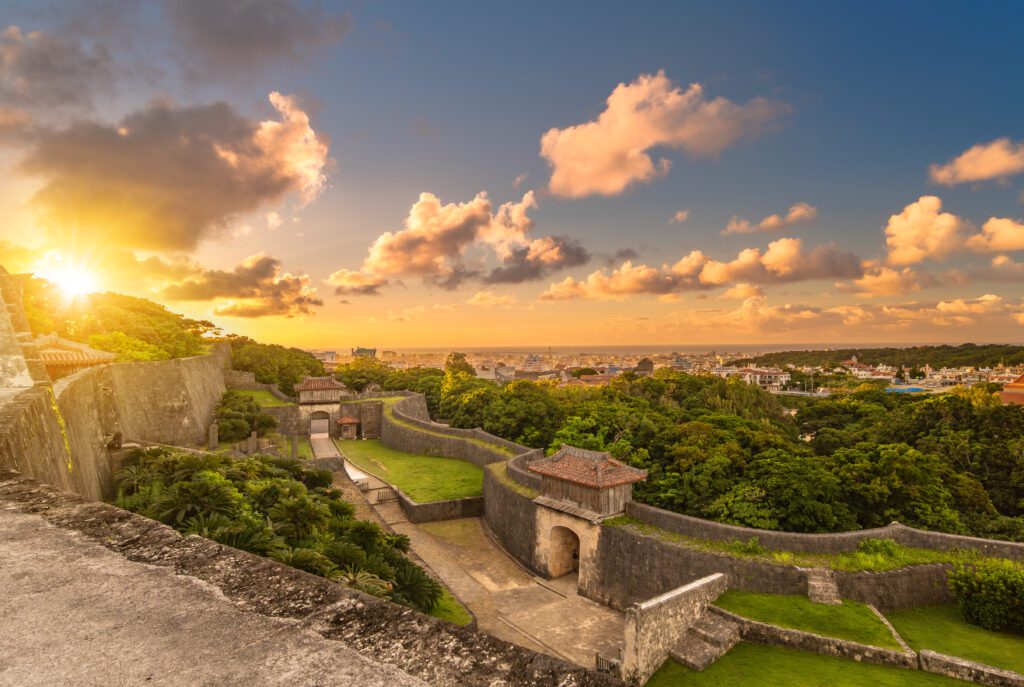
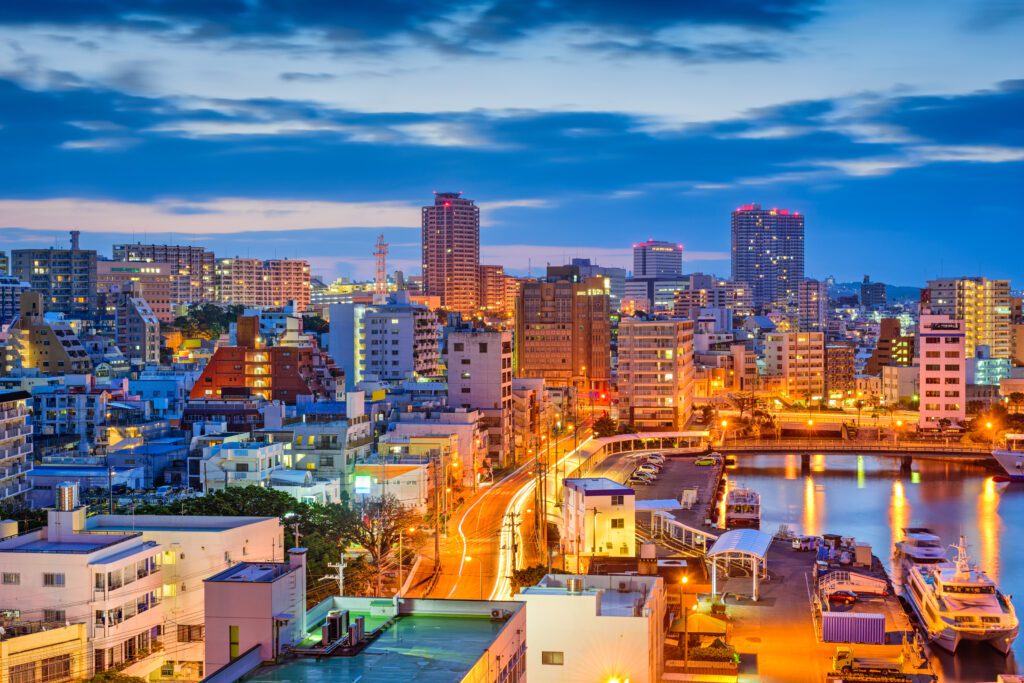
Must-See Attractions and Activities
- Shurijo Castle: More than just a historical site, Shurijo Castle represents Okinawa’s unique Ryukyuan heritage, blending Japanese and Chinese architectural styles. Unlike castles on mainland Japan, its vibrant red walls and intricate designs showcase the distinct culture of the Ryukyu Kingdom. Explore its restored palace grounds, and enjoy panoramic views of Naha while immersing yourself in centuries of history.
- Churaumi Aquarium: One of the largest aquariums in the world, Churaumi Aquarium offers an unparalleled look at marine life from the surrounding seas. Its iconic Kuroshio Tank—home to massive whale sharks and graceful manta rays—mimics the deep ocean currents of Okinawa, providing a rare, up-close encounter with these giants of the sea. It’s a must-see for both families and marine enthusiasts.
- Ishigaki and Miyako Islands: These remote islands offer untouched beaches, clear turquoise waters, and vibrant coral reefs. Ishigaki is renowned for its world-class snorkeling and diving, particularly with manta rays at Kabira Bay, while Miyako is famous for Yonaha Maehama Beach, often hailed as Japan’s most beautiful beach. Unlike other tropical destinations, these islands maintain a tranquil, unspoiled charm.
- Kokusai Street (Naha): This lively street is a hub of local culture, blending modern shops with traditional markets. Unlike typical tourist streets, Kokusai Street offers a chance to taste authentic Okinawan dishes like beni-imo tarts and shop for handcrafted Ryukyuan glassware and textiles, all while soaking in the vibrant atmosphere of street performers and cultural festivals.
- Peace Memorial Park: More than just a WWII memorial, Peace Memorial Park is a place of reflection set against Okinawa’s scenic coastline. Its thought-provoking exhibits detail Okinawa’s pivotal role during the war, while the serene surroundings and sea views create a space for contemplation, making it a unique blend of history and natural beauty.
ASMUI Spiritual Hikes (formerly Daisekirinzan): A hidden gem in northern Okinawa, this natural park is known for its dramatic limestone rock formations, ancient forests, and scenic hiking trails. Renamed ASMUI Spiritual Hikes to reflect its spiritual significance, it offers an immersive experience surrounded by nature and folklore. Unlike other hiking spots in Okinawa, ASMUI provides panoramic views of both the East China Sea and the Pacific Ocean, making it a must-see for nature lovers and photographers.

How to Get to Okinawa
By Air: Fly into Naha Airport (OKA), the main gateway to Okinawa. Direct flights are available from major cities like Tokyo, Osaka, and Fukuoka, as well as international hubs such as Taipei, Seoul, and Shanghai. For a more scenic route, consider a connecting flight through smaller airports like Ishigaki or Miyako.
Domestic Flights: Japan’s domestic airlines, including ANA, JAL, and Peach Aviation, offer frequent flights to Okinawa, often at budget-friendly prices.
Island Hopping: Explore Ishigaki, Miyako, and other remote islands using domestic flights or ferries. Ferries offer a slower, scenic way to travel between islands, while flights are quicker and more convenient.
Travel Tips: Book flights early for the best prices, especially during peak travel seasons. If you’re island hopping, consider purchasing a multi-island flight pass for added savings.
Where to Stay

Luxury Resorts:
The Ritz-Carlton Okinawa: Set amid lush greenery with ocean views, this resort combines modern luxury with traditional Okinawan design. Its spa, golf course, and fine dining make it perfect for a lavish escape.
Halekulani Okinawa: Located on the scenic coast, this resort is known for its minimalist elegance, infinity pools overlooking the sea, and exceptional service.
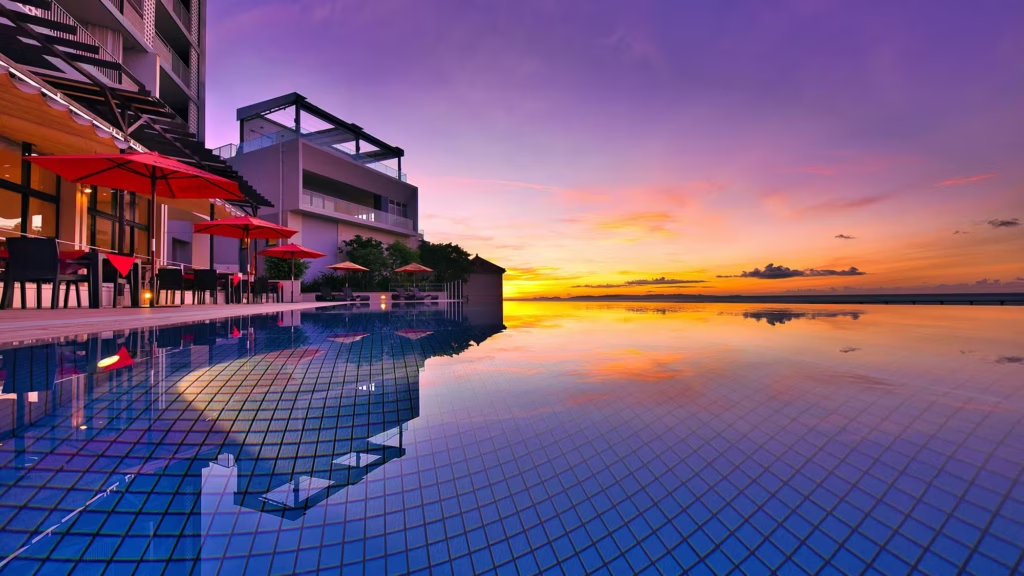
Boutique Hotels:
Ryukyu Onsen Senagajima Hotel: Enjoy stunning sunsets and ocean views from this hotel’s hot spring baths, located just a short drive from Naha.
Okinawa NaHaNa Hotel & Spa: A stylish hotel with a focus on wellness, featuring modern amenities and easy access to Naha’s attractions.
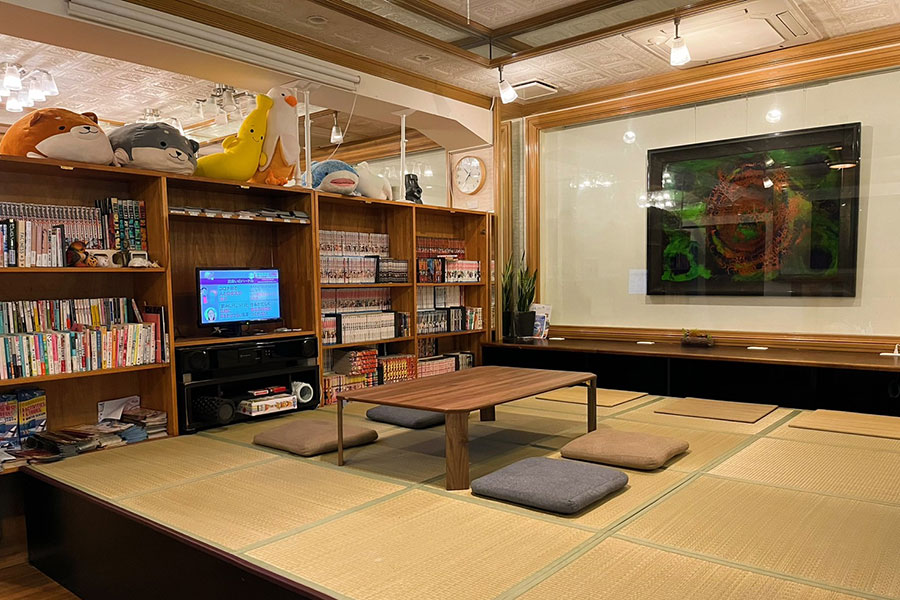
Budget-Friendly Options:
Guest House Umikaji: A cozy, budget-friendly guesthouse in Naha that captures Okinawa’s laid-back vibe, perfect for solo travelers and backpackers.
The Kitchen Hostel Ao: Offering affordable and stylish dorms, this hostel is ideal for those who want to meet fellow travelers without sacrificing comfort.
What to Eat
Okinawan Soba: A hearty noodle soup made with thick wheat noodles, tender pork belly, and a savory fish broth. Unlike traditional Japanese soba, Okinawan soba is richer and more filling, perfect after a day of exploring.
Goya Champuru: A stir-fry of bitter melon, tofu, pork, and eggs that showcases Okinawa’s healthy, home-cooked cuisine. Its slightly bitter taste may be an acquired one, but it’s a local favorite known for its health benefits.
Taco Rice: Okinawa’s creative twist on tacos, combining seasoned ground beef, lettuce, tomatoes, and cheese served over rice. Invented near U.S. military bases, it’s a fusion dish that reflects the island’s unique cultural influences.
Fresh Seafood: With its surrounding waters teeming with marine life, Okinawa offers some of the freshest sushi, sashimi, and grilled fish you’ll ever taste. Look out for local delicacies like mozuku seaweed and umi-budo (sea grapes).
Blue Seal Ice Cream: Originally founded to serve American military personnel, Blue Seal has become a beloved local brand. Don’t miss unique flavors like Okinawan salt cookies and beni-imo (purple sweet potato), both inspired by local ingredients.
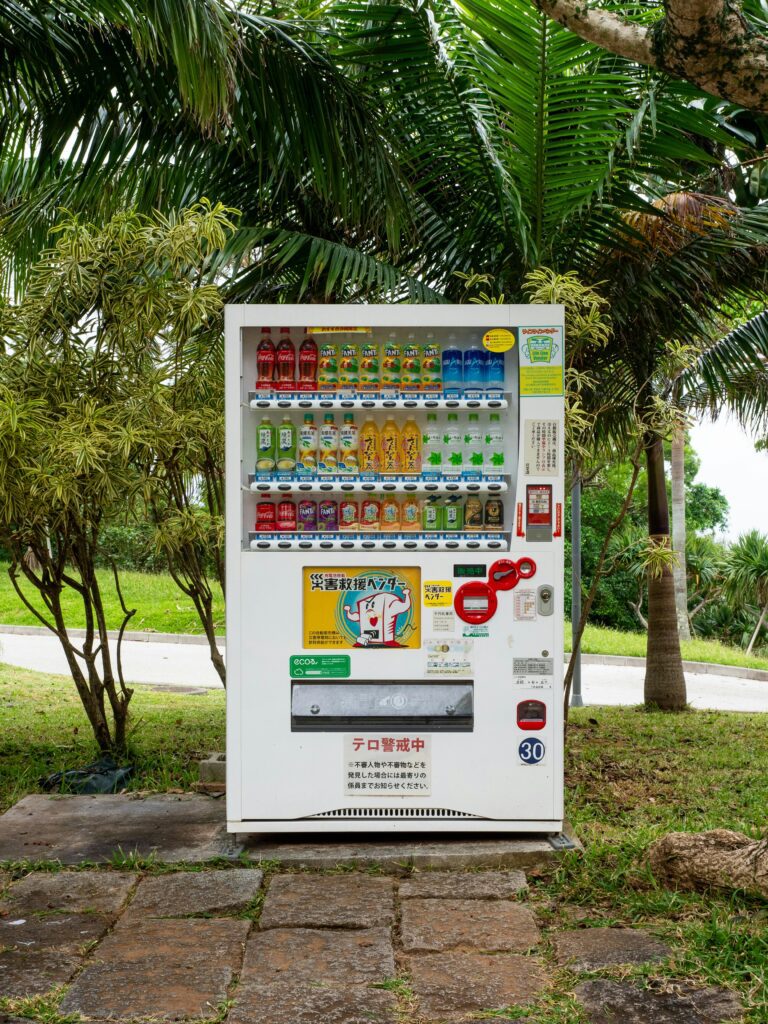
Tips for Planning Your Okinawa Trip
Rent a Car: Essential for exploring beyond Naha, as public transportation is limited in rural areas. Driving allows you to visit remote beaches, scenic viewpoints, and hidden gems at your own pace. Be sure to have an International Driving Permit (IDP) if you’re visiting from abroad.
Pack for the Weather: Lightweight clothes, sun protection, and comfortable shoes are essential. Pack reef-safe sunscreen if you plan to snorkel or dive, as it’s better for marine life. If visiting in winter, bring layers for cooler evenings.
Respect Local Culture: Learn basic Japanese phrases like “arigatou” (thank you) and “sumimasen” (excuse me). Remove shoes when entering homes, temples, and traditional inns. Be mindful of noise levels and respect nature by not littering or disturbing wildlife.
Book Early: Hotels and resorts fill up quickly during peak seasons, especially during Golden Week (late April to early May), summer holidays, and cherry blossom season. Reserve accommodations and activities in advance to secure the best options.
Bring Cash: While major cities accept credit cards, smaller towns and local markets may only take cash. ATMs that accept foreign cards are available at convenience stores like FamilyMart and Lawson.
Stay Connected: Rent a portable Wi-Fi device or get a SIM card for easy navigation, translation apps, and staying in touch.
Plan for Island Time: Life moves at a slower pace in Okinawa, so embrace the laid-back atmosphere. Allow extra time for travel, and don’t rush through your itinerary. Enjoy the island’s relaxed vibe and take in the natural beauty.
Why Okinawa Belongs on Your Bucket List
Okinawa’s breathtaking beaches, rich culture, and outdoor adventures make it a must-visit destination. But let’s be honest—this isn’t just another vacation spot. It’s a place where you can snorkel with sea turtles in the morning, explore ancient castles in the afternoon, and eat your weight in taco rice by night. Where else can you hike through forests that look straight out of a fantasy novel and then cool off with ice cream made from purple sweet potatoes? What more could you need to explore Okinawa?
Whether you’re chasing adrenaline, soaking in history, or just looking to escape reality with a view of turquoise waters, Okinawa delivers. And if you’re not already convinced, picture yourself sipping a drink as the sun sets over the East China Sea—yeah, you’re already packing, aren’t you? So go ahead, add Okinawa to your bucket list. Trust me, your future self will thank you for the memories (and the food coma).
Have you been to Okinawa? Share your favorite experiences and tips in the comments. If Okinawa is still on your bucket list, what are you most excited to see and do? Let’s talk travel!





